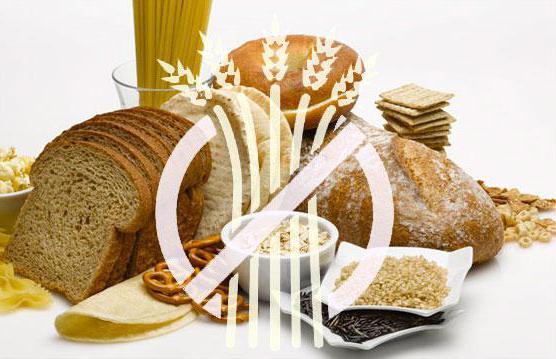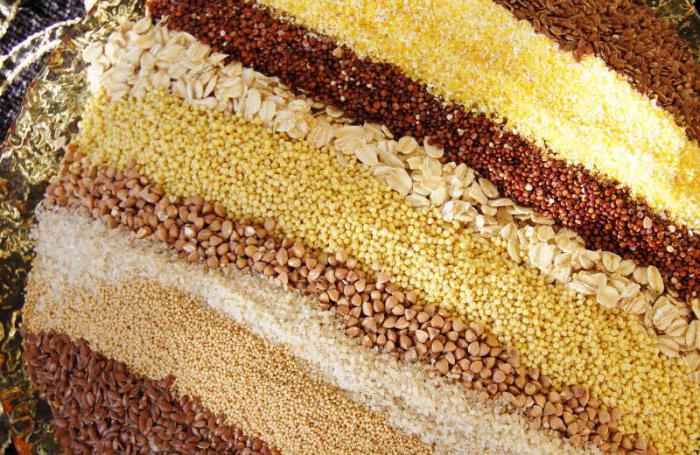
Among people who preach healthy eating, the question of gluten is popular today. What it is? What is the harm of gluten? In what products does he meet? All this will be discussed in the article.
Gluten (lat.gluten - glue) is called a protein found in cereals. Its greatest content is determined in wheat: in the grains 23788 different proteins, united under the common name of gluten, or gluten. Suppliers of it are also rye, oats, barley.
Many avoid products containing gluten. What is it and why is it harmful? The elastic rubber-like protein has gliadin and glutenin in the composition. Gluten is determined in hydrocarbon-containing products, in flour products, in some by-products. It is possible to detect gluten even in ice cream. It does not dissolve in water, after passing hydration, forms fibers when swelling. Gluten is widely used in the production of flour and products from it.
Most of the population protein is not harmful to health. However, some people from birth have an allergic reaction to it. In this case, the damage to gluten is obvious, it becomes dangerous for health.
Products with gluten content in many people (1from a thousand) cause allergic intolerance. This phenomenon is an autoimmune disorder associated with malabsorption (insufficient absorption of substances by the body). Gluten-dependent enteropathy is manifested by pain in the abdomen, diarrhea.
Gluten-sensitive celiac disease is referred to as moreserious form of intolerance to the component. The disease is caused by an increase in the number of intraepithelial lymphocytes in the body that have a specific receptor set. Gluten is defined by cells as a threat. Immune system destroys the villi on the walls of the small intestine. The consequence of the impossibility of complete splitting of microelements is the formation of toxic substances in the intestine and its trauma.
What is the harm of gluten? In adults with latent (latent) forms of celiac disease, there are violations of stool, flatulence, bloating. Often, it is masked by various forms of diseases of the digestive tract, dermatological pathologies. After 30 years, the atypical form is manifested. Concomitant symptoms are characterized by joint pain, kidney disease, depression, migraine, changes in the biochemical composition of the blood. According to clinical studies, up to 8 percent of infertile women suffering from celiac disease were safely given birth, thanks to a gluten-free diet.
Since the main factor of glutenintolerance is a genetic predisposition to it. It is possible to diagnose celiac disease from childhood. In a child, gluten intolerance manifests itself as a frequent mushy, foaming stool (5 times a day), foul-smelling. Other signs - a large "rickety" stomach, a noticeable shortage of weight to two years, slow growth of the child.
Ill organism organism is under-receivednecessary microelements, nutrients, vitamins. Hence the attendant signs of the disease in children may be the presence of rapid fatigue, lethargy, emotional instability (tearfulness, aggression). Often, sick children suffer from dermatitis, bad skin, frequent fractures, poor posture, anemia, dental and gum disease.
Boys, growing up, with gluten intolerance are prone to sexual dysfunction, and girls - a violation of the menstrual cycle.

Gluten intolerance without treatment is fraught withserious complications. It can manifest itself in autoimmune hepatitis, autoimmune thyreotide, type 1 diabetes, rheumatoid arthritis, gastrointestinal diseases, up to oncological formations. Diseases of recurrent pericarditis, scleroderma, myasthenia gravis, difficulty in conceiving a child can also be a consequence of neglected celiac disease.
For information: the critical limit of gluten content for people with allergies per component is 1 mg per 100 g of product.
Often, gluten intolerance is difficultTo define: the symptomatology is similar to signs of many diseases. For the most part, celiac disease is detected with complex diagnosis. Targeted identification is carried out in stages.
The main treatment is a lifelong adherence to a gluten-free diet.

Where is gluten? Wheat, barley, oats, rye - and all the products from these cereals. Cereals from them, bran also have a composition of gluten. In certain doses, it is found in beer beverages, kvass, wheat vodka, malt extract. In coffee and cocoa there is also this protein.
Characteristic of the presence of gluten gastronomicproducts: meatballs, cutlets, sausages, crab sticks, chips, mayonnaise, sauces and dressings. Bouillon cubes, powders, ready-made soups and cereals, soy products contain protein.
Need to know: food additives E150 E160 E411 E637 E636 E953 E965 indicates the presence of gluten in the product. Its presence is revealed in products with dyes and flavors.
Where else is gluten? It is a component of many medications - valerian in dragee, "Complex", tableted "Metronidozole", "Diclofenac", "Fenistila", "Paracetamol", etc. Particular attention should be paid to preparations for children (vitamins, tablets). Gluten-dependent people when choosing medicines are required to consult a doctor.

The absence of gluten is found in the following foods.
Harmless use of hard cheeses. But you should pay attention to the labels on the packaging, so as not to be mistaken with the choice of products.

Rice is an excellent product for people withgluten intolerance. Up to 70% of its components are complex carbohydrates, which contribute to rapid saturation and a prolonged sense of satiety. It contains up to 8% of vegetable protein, which allows vegetarians to do without meat. The presence of fiber in a small amount is useful for good work of the stomach and intestines. it envelops the mucous membranes and provides them with protection from irritants.
Vitamin B as part of rice contributes to the rightfunctioning of the central nervous system, and lecithin in a large number of beneficial effects on intellectual activity. Most importantly, gluten in rice is missing even in small doses. This makes the rump useful for people suffering from celiac disease.

Analytical data show that productiongluten and its sales are growing (by 2016 to 4%). Gluten is removed from wheat flour using an aqueous medium and decanting centrifuges separating the gluten from the other ingredients. Then, the gluten is dried, during which its chains are broken by disintegrators. A circulating dryer with a sparing temperature regime contributes to the preservation of the structure of the protein.
Gluten is used for the production of flour inAs a component that determines the characteristics of the test: the quality of the gluten depends on its elasticity, elasticity. Cereals with a low protein content give a weak flour. The addition of gluten is economical and profitable for producers: the cost of such products with good commercial qualities is much lower than the cost of making flour from strong wheat.
The use of "gluten" flour is important forproduction of bakery and confectionery products from it. With the presence of protein, the water-absorbing capacity of the dough increases, the shelf life of the finished product increases, and the physical properties of the dough are strengthened. In addition, the products are less crumbly, and the percentage of output of finished products grows to 7 units.
In the production of macaroni production, protein is neededas a plasticizer and binder, which is important when forming dough and cooking finished products. In ready-made breakfasts with wheaten, oat bran is also present gluten as an enriching ingredient. Meat processing industry uses it as a functional component that contributes to improving the structure of products, increasing the density and elasticity of products.
Due to the viscoelastic properties of gluten, it is used for the production of cheese and meat, crab analogs, artificial caviar.

Industrial production of flour with contentgluten does not mean that gluten-dependent people will never have to eat bread, bakery products. Salvation will be flour without gluten. Her variety will make a beautiful gluten-free menu. For nutrition without gluten, flour from buckwheat, rice, corn, peas is recommended. Useful use of flour dishes from flax, amaranth, almonds, potatoes, bird cherries, tapioca.
For the viscosity of the test, gluten is used instead ofcorn and potato starch. Without causing harm to health, you can bake pies, make pancakes and enjoy syrniki. In addition, the shops sell ready-mixed flour mixtures for all types of dough (sand, puff, etc.) for making pancakes, cookies, bread.

The essence of such nutrition is thatthe use of products without gluten can not do harm to health, but for people with celiac disease - this is a vital necessity. For gluten-free food, the main rule is the exclusion of wheat, rye, barley, oats from the ration, as well as the whole derivative of them (cereals, bakery, confectionery).
It should be remembered: in cheap sausages, sausages, frozen meat and fish semi-finished products, many sauces are more likely to add powdered gluten.
It is useful to use buckwheat, millet,corn groats. Such a grain crop, like amaranth, was used by the ancient Incas and Aztecs, was revered by wise old men in Russia. Inclusion in the diet of legumes, fresh vegetables and fruits will enrich the diet, make it useful.
Nutrition without gluten does not limit consumptionmeat, fish, dairy and eggs. Some hot drinks are not forbidden: wine, tequila, rum, some types of whiskey. Recently, production of gluten-free beer has been established.
Gluten is harmful to people,predisposed to allergies to this protein. However, food without its use does not affect the quality of food and its diversity. In addition, a number of manufacturers of gluten-free products today offers a fairly large range of products that do not contain harmful proteins.
</ p>